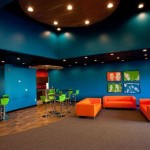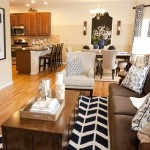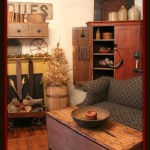Decoration For Living Room: A Comprehensive Guide
The living room, often considered the heart of a home, serves as a space for relaxation, entertainment, and social interaction. As such, its decoration warrants careful planning and execution to create an environment that is both aesthetically pleasing and functionally efficient. Effective living room decoration involves a multifaceted approach, considering factors such as spatial layout, color palettes, furniture selection, and the integration of decorative accessories. Ultimately, the goal is to curate a space that reflects the homeowner's personal style while maintaining a cohesive and inviting atmosphere.
Successful living room decoration requires a balance between visual appeal and practicality. Overly cluttered spaces can feel overwhelming and impede movement. Conversely, sparsely decorated rooms can appear stark and impersonal. Therefore, finding the right equilibrium is essential. This involves careful consideration of the room's dimensions, natural light sources, and intended use. A well-decorated living room should be adaptable to various activities, from hosting formal gatherings to providing a comfortable setting for everyday relaxation.
Understanding Spatial Dynamics and Layout
The spatial arrangement of a living room is fundamental to its overall functionality and aesthetic appeal. The size and shape of the room dictate the possible furniture arrangements and influence the flow of movement. Before selecting furniture, it's crucial to accurately measure the room and create a floor plan. This will allow for visualizing different layouts and ensuring that furniture pieces are appropriately sized and spaced.
Focal points play a critical role in defining the spatial organization of a living room. A focal point can be a fireplace, a large window with a scenic view, or an eye-catching art piece. Furniture should be arranged to complement and accentuate the focal point, creating a sense of visual balance and harmony. In the absence of a natural focal point, one can be created through the strategic placement of a statement piece of furniture or a gallery wall.
Traffic flow should also be a primary consideration when planning the layout. Pathways should be clear and unobstructed, allowing for easy movement between different areas of the room. Avoid placing furniture in a way that creates bottlenecks or forces people to navigate around obstacles. Adequate spacing between furniture pieces is essential for creating a comfortable and inviting atmosphere.
Zoning is another important aspect of spatial dynamics. Dividing the living room into distinct zones based on function can enhance its versatility. For example, a conversation area with comfortable seating can be separated from a reading nook with a cozy armchair and a bookshelf. This zoning can be achieved through the use of rugs, furniture placement, or even changes in flooring or wall color.
Consider using furniture to define spaces. A large sectional sofa can delineate a seating area, while a console table can separate the living room from an entryway. This approach helps to create a sense of order and structure within the room, making it feel more organized and intentional.
Selecting Color Palettes and Textures
Color palettes exert a significant influence on the mood and ambiance of a living room. The choice of colors can evoke different emotions and create a specific atmosphere. Neutral color schemes, such as variations of white, gray, and beige, provide a versatile backdrop that can be easily accented with pops of color. These colors create a sense of calm and spaciousness, making them ideal for smaller living rooms.
Warm color palettes, incorporating shades of red, orange, and yellow, can create a feeling of warmth and energy. These colors are often associated with hospitality and can make a living room feel more inviting. However, it's important to use warm colors judiciously, as they can be overpowering in large doses. Balancing warm colors with cooler hues can create a more harmonious and balanced effect.
Cool color palettes, featuring shades of blue, green, and purple, can create a sense of tranquility and relaxation. These colors are often associated with nature and can evoke feelings of peace and serenity. Cool colors are particularly well-suited for living rooms that receive ample natural light.
Texture plays a crucial role in adding depth and visual interest to a living room. Incorporating a variety of textures, such as soft fabrics, rough wood, and smooth metal, can create a more tactile and engaging environment. The use of textured fabrics, such as velvet, linen, and wool, can add warmth and comfort to furniture pieces. Area rugs with different pile heights and patterns can define spaces and add visual interest to the floor.
Wall textures can also contribute significantly to the overall ambiance of a living room. Textured paint, wallpaper with embossed patterns, or even exposed brick can add depth and character to the walls. Layering different textures throughout the room creates a more dynamic and visually stimulating space.
Lighting also affects the appearance of color and texture. Natural light enhances colors, while artificial light can alter them. Consider how different light sources will affect the chosen color palette and textures when making design decisions.
Integrating Furniture and Decorative Accessories
The selection of furniture is a critical component of living room decoration. Furniture pieces should be both functional and aesthetically pleasing, complementing the overall style and design of the room. Consider the size and scale of the furniture in relation to the room's dimensions. Oversized furniture can overwhelm a small living room, while undersized furniture can appear lost in a large space.
Seating arrangements are essential for creating a comfortable and inviting atmosphere. A combination of sofas, armchairs, and accent chairs provides flexibility for different social situations. Consider the style of the furniture and how it relates to the overall design aesthetic. Modern furniture styles often feature clean lines and minimalist designs, while traditional styles tend to incorporate more ornate details and embellishments.
Coffee tables serve as a focal point in the seating area and provide a functional surface for placing drinks, books, and decorative items. The size and shape of the coffee table should be proportional to the size of the sofa and the surrounding seating. End tables provide additional surface space for lamps, books, and other essentials. Console tables can be used to display decorative objects or to provide storage space.
Decorative accessories add personality and character to a living room. Artworks, such as paintings, prints, and sculptures, can express the homeowner's taste and create a visual focal point. Throw pillows and blankets add comfort and texture to seating areas. Curtains and window treatments can enhance privacy, control light levels, and add a decorative element to the room.
Plants and flowers can bring life and vibrancy to a living room. Indoor plants can improve air quality, add a touch of nature, and create a more relaxing atmosphere. Vases filled with fresh flowers can add a pop of color and fragrance to the room. Consider the maintenance requirements of different plants and choose varieties that are well-suited to the living room's environment.
Mirrors can be used to enhance the sense of space and reflect light. Placing a large mirror on a wall can make a small living room feel larger and brighter. Mirrors can also be used to accentuate decorative elements and create visual interest. Lighting fixtures, such as lamps, chandeliers, and sconces, provide both functional and decorative illumination. Layered lighting, combining ambient, task, and accent lighting, can create a more dynamic and versatile atmosphere.
The arrangement of decorative accessories is as important as the selection of the items themselves. Avoid cluttering surfaces with too many objects. Grouping items together in a visually appealing way can create a more cohesive and intentional look. Consider the color, texture, and scale of the accessories when arranging them. Balancing elements of different sizes and shapes can create a more dynamic composition.
Rugs act as anchors for seating areas, and also add warmth, texture, and color to the floor. Consider the size of the rug in relation to the furniture arrangement. A rug that is too small can make the seating area feel disjointed, while a rug that is too large can overwhelm the room. Experiment with patterns and colors to find a rug that complements the overall design aesthetic.
:strip_icc()/cdn.cliqueinc.com__cache__posts__212361__-2030968-1483470364.700x0c-8571e60cad7b42a981ab29ae10b5c153-497b002f87af4747b2ab38b560e7c0fd.jpg?strip=all)
How To Decorate A Living Room 20 Ideas And Common Mistakes

Looking For Ideas To Decorate Your Living Room Designcafe

77 Best Living Room Decor Ideas 2025 Unique

Living Room Decor Ideas For Your Home Design Cafe

How To Decorate A Living Room 11 Designer Tips Houzz
:strip_icc()/cdn.cliqueinc.com__cache__posts__268171__emily-henderson-target-design-advice-268171-1537395824654-image.700x0c-3bf5dbafc49045e5b14c9ad244891f94.jpg?strip=all)
40 Best Living Room Wall Décor Ideas

Living Room Decorating Ideas For Your Style Goodhomes Co In

Find Out Where To Buy Every Single Thing In This Plant Filled Bohemian Living Room Hunker Furnishing Leather Furniture

30 Inspirational Modern Living Room Decor Ideas Farmhousedecorclassroom Farm House Apartment

9 Wall Decorations For Living Room Rock Solid Rustic
Related Posts







